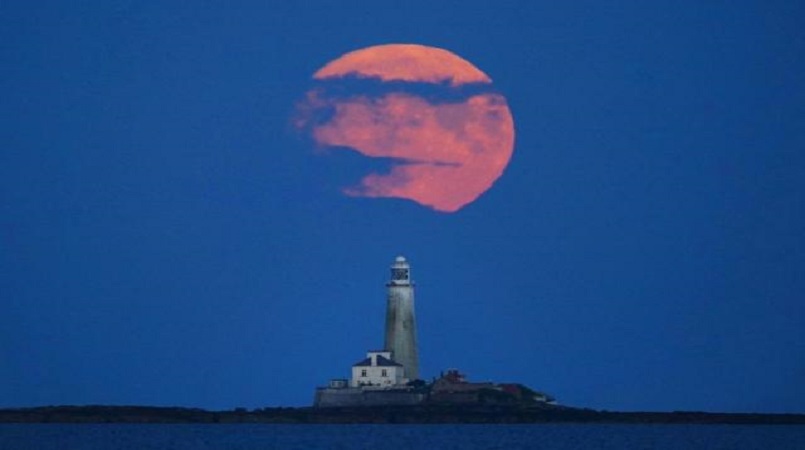
The Moon will have us gazing at the sky on Monday evening as it appears brighter and larger than usual.
July's supermoon will appear full for up to three days, according to Nasa.
Known as a Buck Moon, it will be closer than normal in its orbit around the Earth.
This is because the Moon's orbit is not a perfect circle due to the Earth's gravitational pull; instead it is elliptical, like an elongated circle or oval.
Because of this, there are times in the Moon's 27.32-day orbit when it is closer to the Earth and other times when it is further away.
A supermoon happens when the Moon is at the closest point to Earth in its orbit and also in its full moon phase.
The full Moon in July was given the Native American name of Buck Moon because the antlers of male deer are in full growth mode in July, according to the Royal Observatory. Bucks shed and regrow their antlers.
The Moon reached peak illumination at 12:39 BST (07:39 Eastern Time) on Monday, according to the Old Farmer's Almanac.
The Almanac, which has published astronomical data for centuries, said the Buck Moon will orbit closer to the Earth than full Moons we have already had this year.
August's full Moon will be the only supermoon closer to the Earth this year, the publication said.
In the UK, the best time to see the supermoon event will be earlier in the night across England, Wales, southern Scotland and Northern Ireland, according to BBC Weather Presenter Stav Danaos.
As the night progresses, visibility may lessen as clouds and rain fill the skies for much of central Scotland, he adds. After midnight, an area of cloud and rain will spread across southern parts of the UK too.
